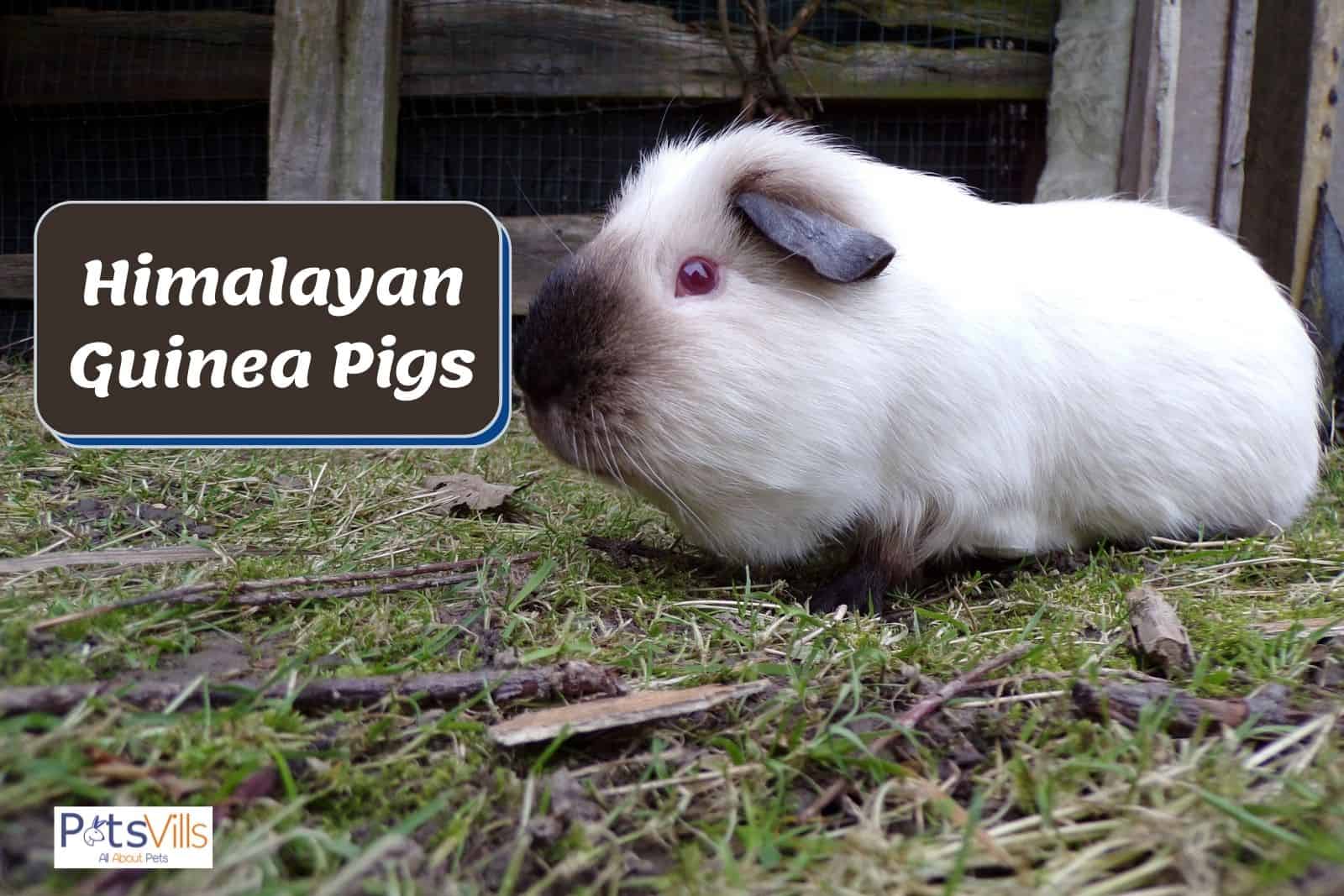They are an albino guinea pig with dark points on their snout, ears, and feet.
The Himalayan guinea pig comes from the South American Andes and is another in a long list of guinea pigs that come with a unique cuteness.
The Himalayan was once a wild animal but became domesticated over the years and is easily identifiable due to its color and markings.
They are albino guinea pigs with dark points on their snout, ears, and feet. They share a similar color scheme with the Himalayan cat, and the consensus is that that is where they got their name (they are not actually from the Himalayas).
Himalayans make wonderful pets due to them being so friendly and docile. They are also amazingly cute and unlike no other guinea pig out there.
With a short coat, Himalayan guinea pigs are relatively easy to care for. They make wonderful pets for adults and children. Let’s take a closer look at what makes them so great.
READ MORE: Abyssinian Guinea Pig Facts
Table of Contents
Himalayan Guinea Pig Coat & Looks
Being albino guinea pigs, the Himalayans are almost completely white. It is this color that sets them apart from the other cavy breeds out there.
They do have some color though, and these points of color are called, well, points. Himalayans generally have dark-colored snouts, ears, and feet.
When they are born, the Himalayans are completely white, and the points develop in the first few months and then darken over time.
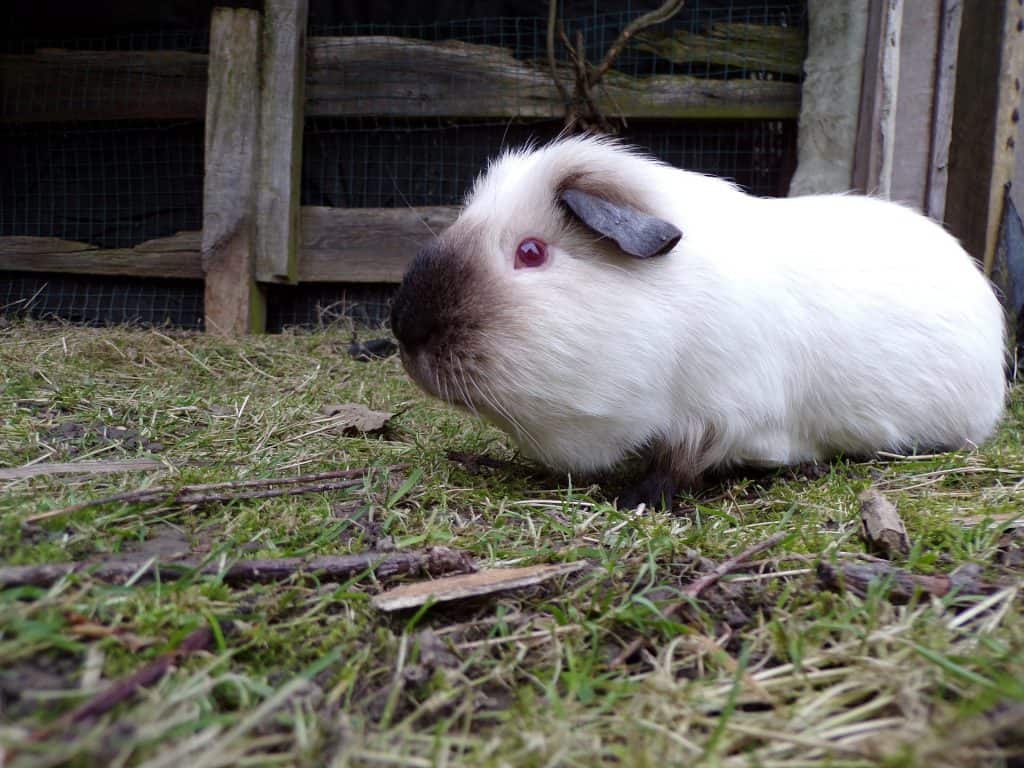
Himalayans do not do well in the sun, so keep them in a shaded area.
The points can darken or fade over time, depending on the stress level of the animal, its diet, and the temperature at which it is kept.
Dark points are seen as a sign of a healthy animal, so be sure to monitor diet and temperature. Himalayans do not do well in the sun, so keep them in a shaded area.
Himalayan guinea pig coats are short and smooth. They only come in one color, due to it being an albino.
The guinea pig’s eyes are a striking red color due to the lack of pigmentation in the face. These red eyes are also seen as a sign of health, and give the guinea pig a cuteness that is like no other.
Check these pictures of American guinea pigs!
How Do I Care for a Himalayan Guinea Pig?
Himalayans are easier to care for than many other breeds when it comes to grooming. For this reason, they make great pets for children of all ages.
You will still need to groom them but only once or twice a week, although grooming them is a good way to spend time with them so you can groom them more frequently if you want to.
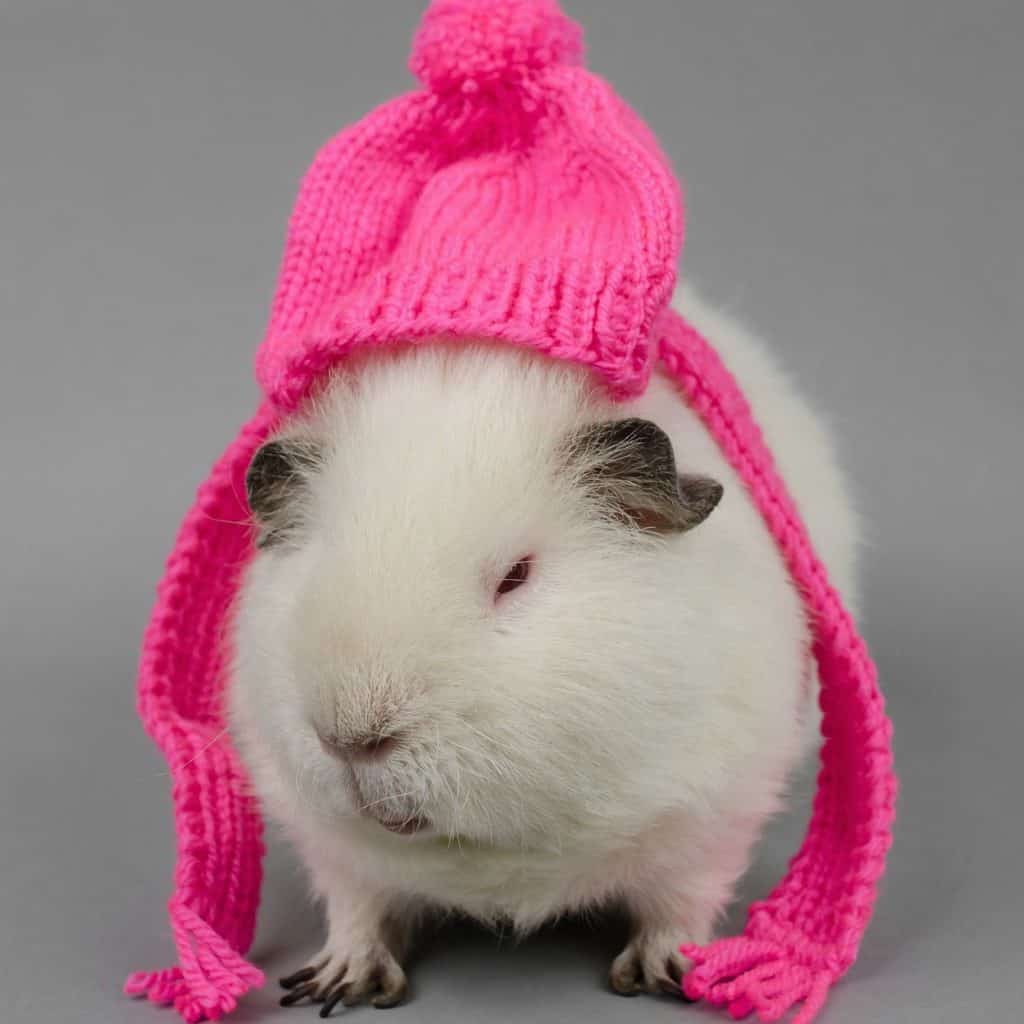
If they are shedding, which they should do twice a year, you should up the frequency to get rid of the extra hair.
Brush your Himalayan every second day during shedding season.
The nails of your Himalayan also need to be checked and trimmed every so often. You may prefer to take your guinea pig to the vet for this, or you can do it yourself.
Check their nails when you are grooming them and take off the tip if needed. Be sure not to cut off too much, or you can cause bleeding.
All guinea pigs need somewhere to live. Choosing the right cage is essential to the happiness of your pet. For a Himalayan, we recommend a cage at least 20” x 30”, but you can never go too big.
Be aware, though, that a bigger cage takes longer to clean, but a smaller cage can become more soiled. Keep the cage away from drafty areas and out of direct sunlight.
You should aim to completely clean the cage at least once a week, and spot-clean the cage every day. Keeping a clean cage is key to keeping a healthy guinea pig.
How Active Are Himalayan Guinea Pigs?
All guinea pigs need plenty of exercise and the Himalayans are no different. Before investing in a guinea pig, you should ensure that you have enough room for them to run around in.
You need space for the cage but also space to let them out of the cage. This could include a run, pen, a room, or your home.
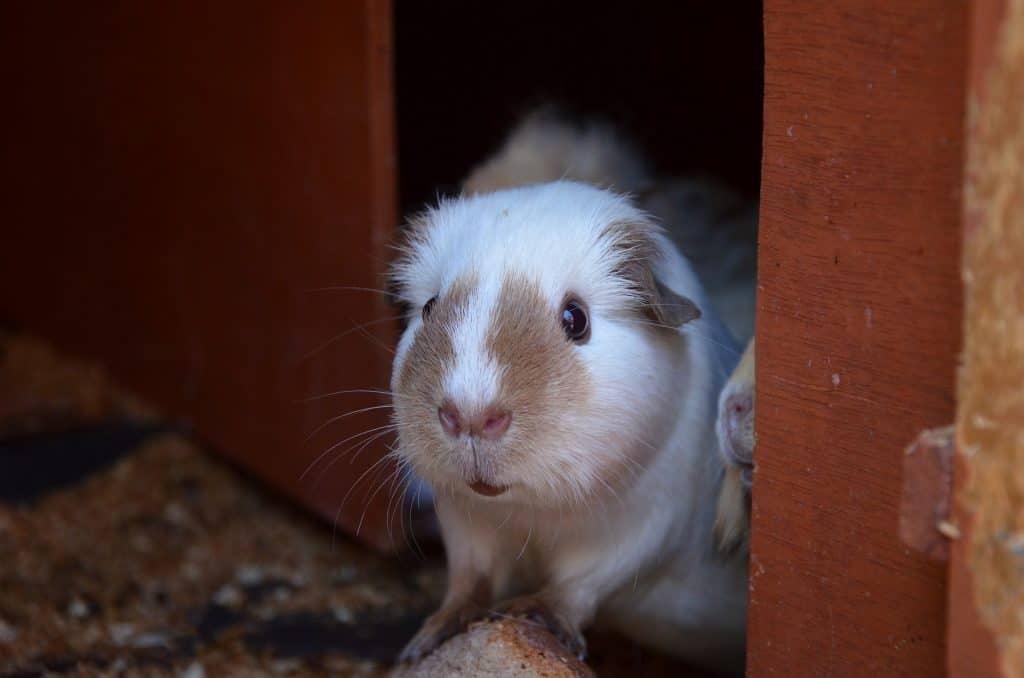
A large pen will give your Himalayan the space to run, and you should add some toys and interaction to this area.
Himalayans love to run from level to level, so put in some shallow ramps for them to move up and down on.
They are also playful and will appreciate you being in there with them.
If you do want to let them out into a room or your home, then you should pig-proof the place before you do. Remove anything from the floor which may be harmful to them or which they could chew.
They will love the space, especially being able to hide under and behind objects. Again, be in the room with them to create a bond.
If you do take them outside, then there are a few things to think about. Keep the guinea pig in the shade so that they do not lose their color or become uncomfortable.
You should also keep them in an enclosed run to ward off predators and be with them the entire time, just in case.
What Should I Feed My Himalayan Guinea Pig?
Himalayans eat the same diet as most other guinea pig breeds. They need a mix of vegetables, fruits, grains, and water. The best thing which you can do is to keep them in lots of fresh hay.
Hay will naturally wear down the teeth of your Himalayan without you having to do anything about it.
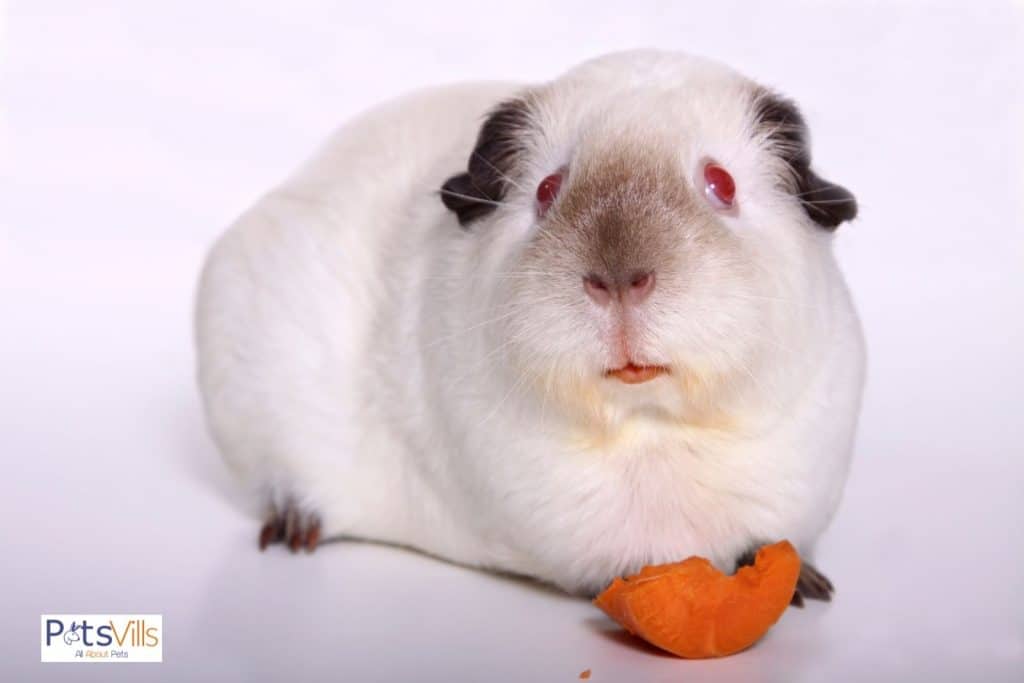
A guinea pig’s diet consists of at least 70% hay, but you can top up the hay if they are eating all of it. It is also great for their digestive system.
Fruits, such as strawberries, grapes, and tomatoes, along with sweeter vegetables, like carrots and bell peppers can be added in moderation and given as treats.
Pellets will make up a large part of the rest of their diet, with 1/8 cup of pellets being recommended (though always check the instructions on the package).
Add in a cup of fresh vegetables, mainly leafy veg. Fruits, such as strawberries, grapes, and tomatoes, along with sweeter vegetables, like carrots and bell peppers can be added in moderation and given as treats.
Always make sure that your Himalayan has plenty of fresh water to drink. Top up their water dish whenever it is low, and change the water if it ever gets contaminated.
Take a look at this compilation video of the cutest Himalayan cavies:
Healthcare for Himalayan Guinea Pigs
It can be hard to spot stress in a Himalayan, but it can cause their points to fade.
Himalayans are pretty healthy animals and do not suffer from any health conditions other than the illnesses and diseases which most guinea pigs suffer from.
Teeth are often a problem with guinea pigs, but that is easily prevented by a diet rich in hay and regular vet checks.
Parasite and mites in the coat can also be troublesome, but again it is easy to deal with. With regular grooming and cage cleaning, most health problems can be avoided.
One thing to look out for with Himalayans is stress. If they get stressed, they can become unhappy and unhealthy. It can be hard to spot stress in a Himalayan, but it can cause their points to fade.
Of course, you want to take action before they get stressed. The best way to do this is to spend lots of time with them.
You can also keep them away from loud noises, drafts, sunlight, and some other pets.
While they like to socialize with other guinea pigs, they may become startled if a cat or dog is at the edge of their cage. Prevention is the best cure.
READ MORE: All About the Skinny Pigs
Naming a pair of guinea pigs can be twice the fun – but also twice the challenge! If you’re looking for charming and delightful names for your guinea pig duo, you won’t want to miss the “charming guinea pig names for pairs” video. With its cute and clever name suggestions, you’re sure to find the perfect match for your furry friends!
Himalayan Guinea Pigs As Pets
Himalayans make for wonderful and easy to care for pets. They require little grooming, making them a good choice for children of all ages, and adults who do not have a lot of time to give.
They also like to be held and petted (once they get to know you), but you should be there to supervise if younger kids are picking them up.
They are very friendly creatures and will quickly create a bond with you. When they do, you will be able to pick them up easily and pet them.
Himalayans are easy to care for and very loving.
A great feature is their unique color and markings. Most breeds of guinea pigs come in a variety of colors but none quite like the Himalayan guinea pig.
Granted, you do not have the color choice of other breeds, but the albino look is amazing and beautiful.
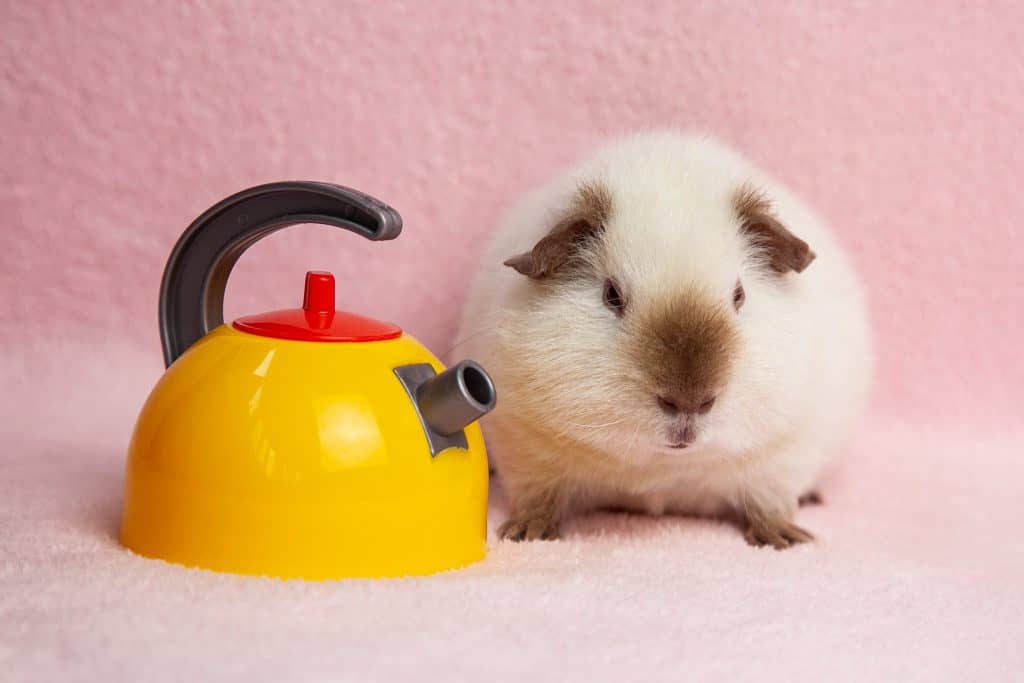
Himalayans are easy to care for and very loving. They are creatures who love to socialize, so we would always recommend buying them in pairs if you have space.
If you do not, then be sure to spend a lot of time with your pet — an affectionate and fun breed of guinea pig for almost anyone.
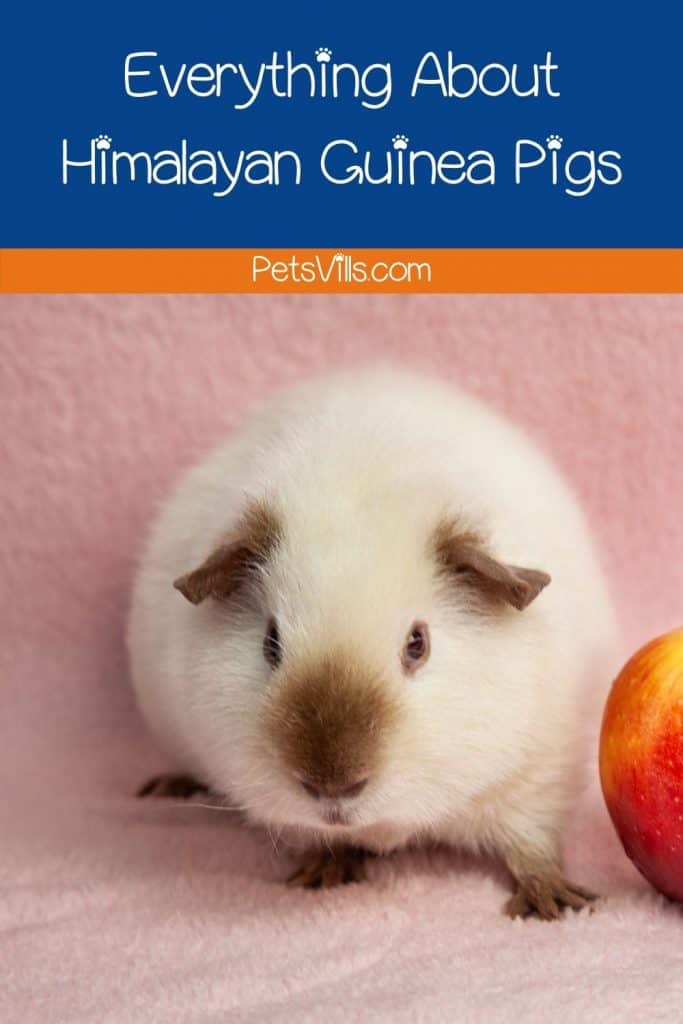
What do you love most about himalayan guinea pigs? Please share your opinion
Alina Hartley is a small-town girl with a ginormous love of bearded dragons. It all started with Winchester, a baby bearded who was abandoned at the shelter by his former owners because of a birth defect that caused one front leg to be shorter than the other. Alina originally went to the shelter looking for a guinea pig, but one look at Winchester and it was love at first sight. From that day on, Alina has dedicated her life to learning everything she can about bearded dragons. She loves helping new beardie parents start their incredible journey with these magnificent reptiles.
Follow her on:
LINKEDIN
TWITTER.
Read her latest articles HERE
Learn more about her HERE.

